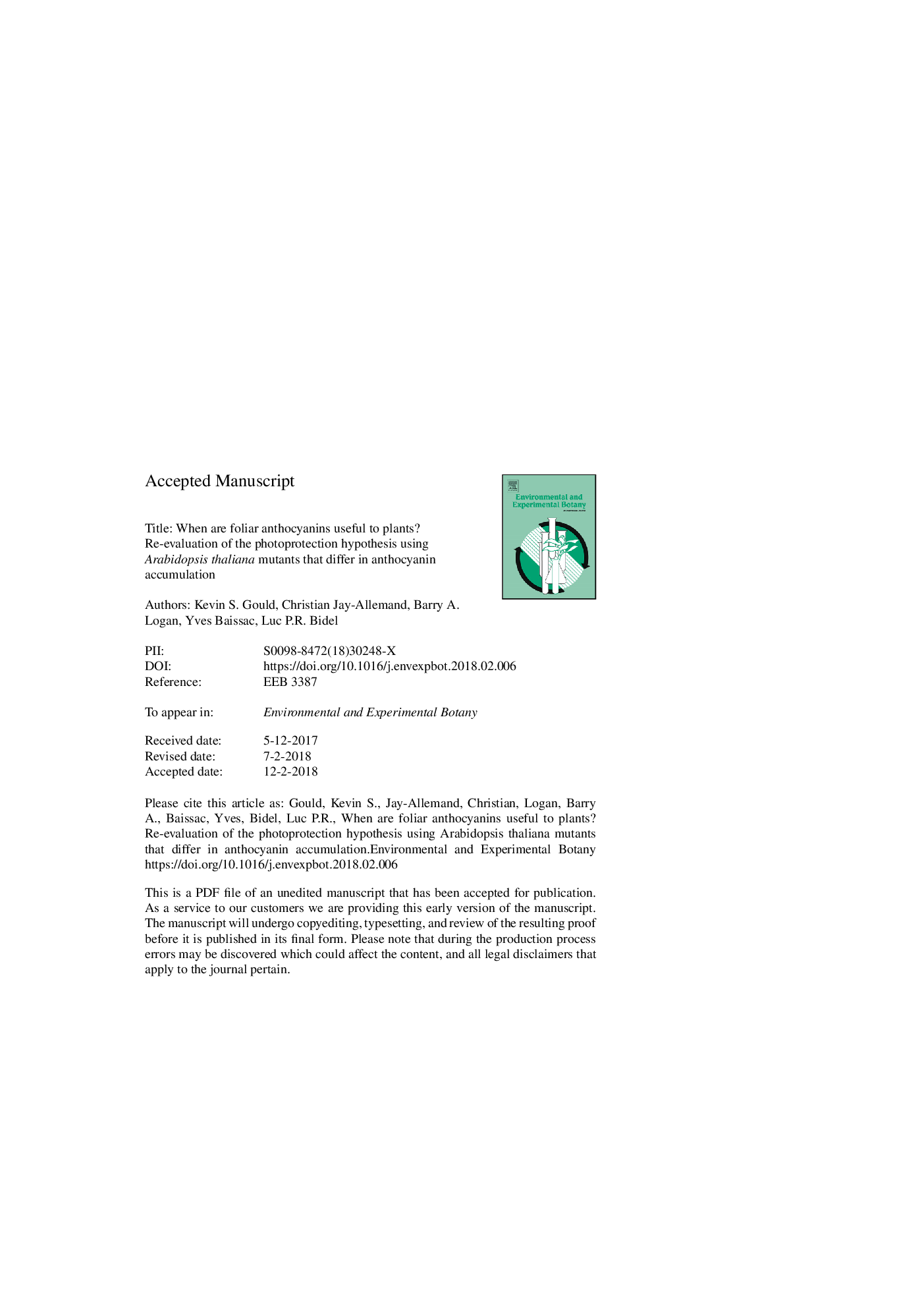| کد مقاله | کد نشریه | سال انتشار | مقاله انگلیسی | نسخه تمام متن |
|---|---|---|---|---|
| 8886816 | 1628023 | 2018 | 41 صفحه PDF | دانلود رایگان |
عنوان انگلیسی مقاله ISI
When are foliar anthocyanins useful to plants? Re-evaluation of the photoprotection hypothesis using Arabidopsis thaliana mutants that differ in anthocyanin accumulation
دانلود مقاله + سفارش ترجمه
دانلود مقاله ISI انگلیسی
رایگان برای ایرانیان
کلمات کلیدی
موضوعات مرتبط
علوم زیستی و بیوفناوری
علوم کشاورزی و بیولوژیک
بوم شناسی، تکامل، رفتار و سامانه شناسی
پیش نمایش صفحه اول مقاله

چکیده انگلیسی
There is strong empirical evidence that foliar anthocyanins assist in protecting chloroplasts from potentially damaging effects of supernumerary photons. Nevertheless, around 30% of published reports failed to uncover any photoprotective advantage of red pigmentation. To understand why anthocyanins are evidently more useful in some situations than in others, we compared the stress responses of wild type (Col-0) Arabidopsis thaliana, which had only trace amounts of foliar anthocyanins, with those of the anthocyanin-rich pap1-D mutant, and, in some experiments, the anthocyanin-deficient ttg1-1. We recorded effects of light quality, light intensity, air temperature, and duration of exposure on quantum yields of photosystem II (ΦPSII) in leaves of different ages, and compared pigment profiles before and after treatment. Although similar in anatomy, chlorophyll content, and xanthophyll cycle activity, pap1-D was photoinactivated less than Col-0, but only when given at least 2â¯h exposure to saturating light at 10â¯Â°C. Differences between the responses of red and green leaves were greatest in older plants that were given protracted exposures to high fluxes of cool-white light (5600â¯K) at chilling temperatures, the decline in ΦPSII being inversely proportional to foliar anthocyanin concentration. Anthocyanins were more abundant in Col-0 and pap1-D after treatment, especially acylated forms for which the absorption spectrum matched the action spectrum for photoinhibition. The quality, intensity and duration of light stress profoundly influence the degree of photoprotection afforded by foliar anthocyanins. Photoabatement by anthocyanins provides a functional advantage only when the capacity for thermal energy dissipation is exceeded by the need to quench excess light.
ناشر
Database: Elsevier - ScienceDirect (ساینس دایرکت)
Journal: Environmental and Experimental Botany - Volume 154, October 2018, Pages 11-22
Journal: Environmental and Experimental Botany - Volume 154, October 2018, Pages 11-22
نویسندگان
Kevin S. Gould, Christian Jay-Allemand, Barry A. Logan, Yves Baissac, Luc P.R. Bidel,